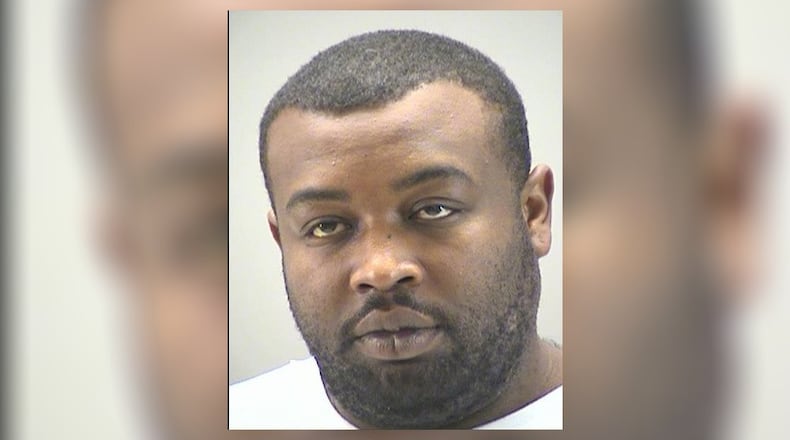Robert A. Richardson Sr., 28, died May 19, 2012 after suffering a seizure before corrections officers and medical personnel put him in handcuffs and restrained him face down until later realizing he had died.
RELATED: County seeks to forbid ‘racist’ text message, bad press from dead inmate trial
An administrator of Richardson’s estate filed a civil rights and wrongful death lawsuit in 2014 against Montgomery County Sheriff Phil Plummer, jail officers and personnel from NaphCare, the jail’s contracted health-care provider. NaphCare settled, according to court documents.
Spokesperson Carrie Masters Starts told this newspaper that NaphCare couldn’t comment on the confidential resolution, but Montgomery County Probate Court records indicate the settlement payment was $500,000. Part of that is to be divided among Richardson’s nine children, and the rest will pay legal fees.
“It’s a long process. I would just say that this family is committed to seeking justice for Robert,” said attorney Nicholas DiCello, who represents Richardson’s estate. “We’re thrilled with the rulings that we’ve gotten and we’re looking forward to the trial.”
RELATED: Internal investigation in Richardson case found no wrongdoing
DiCello said the published ruling by the Sixth Circuit Court of Appeals was emphatic, especially regarding people being handcuffed and held down.
“Despite both a jail policy that prohibited placing restrained inmates in a prone position and a medic’s appeal to handcuff Richardson in front, the officers handcuffed him behind his back and restrained him face down on the floor outside his cell,” according to the appellate decision, echoing language most favorable to plaintiffs from the complaint.
“Richardson died after a 22-minute struggle during which record testimony indicates he continually stated he could not breathe.”
RELATED: Inmate’s family files wrongful death lawsuit against jail personnel
Montgomery County attorneys Keith Hansbrough and Jillian Dinehart had sought to reverse U.S. District Court Magistrate Judge Newman’s ruling, which denied qualified immunity and state law immunity for law enforcement personnel.
DiCello said an appeals court panel ruled in the plaintiffs’ favor 3-0 and then quickly denied a motion to reconsider.
Richardson was in jail for not appearing for a court hearing related to unpaid child support. He would have been released if $2,500 had been posted on his behalf, according to court documents.
RELATED: Judge sanctions county attorneys for attempt to depose jail lawsuit lawyer
The appeals court decided Richardson — as a non-convicted person being held on civil and not criminal grounds — is entitled to 14th Amendment protections.
County attorneys on Wednesday filed a motion to Newman to stay the trial in an effort to petition for a writ of certiorari on behalf of defendants Plummer, corrections officers Dustin Johnson, Keith Mayes, Bradley Marshall, Matthew Henning, Michael Beach, Michael Stumpff, Sgt. Ted Jackson, Sgt. Brian Lewis and deputy Andrew Wittman.
Court documents indicated that in 2009, then-Ohio Gov. Ted Strickland issued an executive order addressing the use of prone restraints that acknowledged, “that there is a risk of sudden death when restraining an individual in a prone position.”
RELATED: County blames NaphCare for jail inmate’s injuries
The documents also show that the county jail had a policy prohibiting “placing prisoners who are in restraints in prone or ‘spread-eagle’ positions.”
The petition is due July 30 for what Hansbrough said were genuine issues to be heard by the Supreme Court of the United States (SCOTUS).
“Defendants will ask the Court to consider whether the right to be free from excessive force was clearly established in 2012 in the circumstances present in this case,” Hansbrough wrote.
MORE: Read other stories from Mark Gokavi
“There is no case law that has indicated how officers should respond when they are assisting in containing an individual to receive medical care while medical care is actually being provided,” Hansbrough continued. “Defendants will also ask the Court to review the standard by which force against a civil contemnor is measured.”
Hansbrough and Dinehart didn’t return messages seeking comment.
Only 5 to 6 percent of attorney-filed cases are generally accepted by the SCOTUS, and that drops to 3 percent or less overall including pro se appeals, according to Supreme Court Press.
“They’ve been steadfast and they’ve now been pursuing justice for over four years,” DiCello said of Richardson’s family and the appellate decision. “We think it’s a win and a strong win for us.”
About the Author
